What fruit trees can I plant?
When you’re planning a home orchard, that may be the first thing you wonder to yourself. Can you plant apple trees, or do they get too big? How about pear trees – your family loves pears, so wouldn’t a pear tree be nice? What about citrus fruit? Can you grow that in your backyard?
What Fruit Trees Can I Plant?
As part of my series on planning and growing a backyard fruit orchard, today we’ll delve into the question of what fruit trees can I plant in my backyard.
When you ask, “What fruit trees can I plant?” you’re asking an important question. You’re really asking, “What will live in my part of the country?”
Your part of the country experiences different temperatures and growing conditions than other parts. You know that intuitively, but you have to understand this in relation to your garden, too.
Each area of the United States has been assigned something called a USDA Hardiness Zone, or Garden Zone. You can find your zone on the map on the USDA website.
The USDA hardiness zones are based on the average temperatures, especially the dates of the first “killing” frost in the fall and the last frost in the spring. These are just averages, of course, and can change from year to year, but in general, the USDA zones are pretty accurate.
So when you ask, “What fruit trees can I plant?” start by knowing your gardening zone.
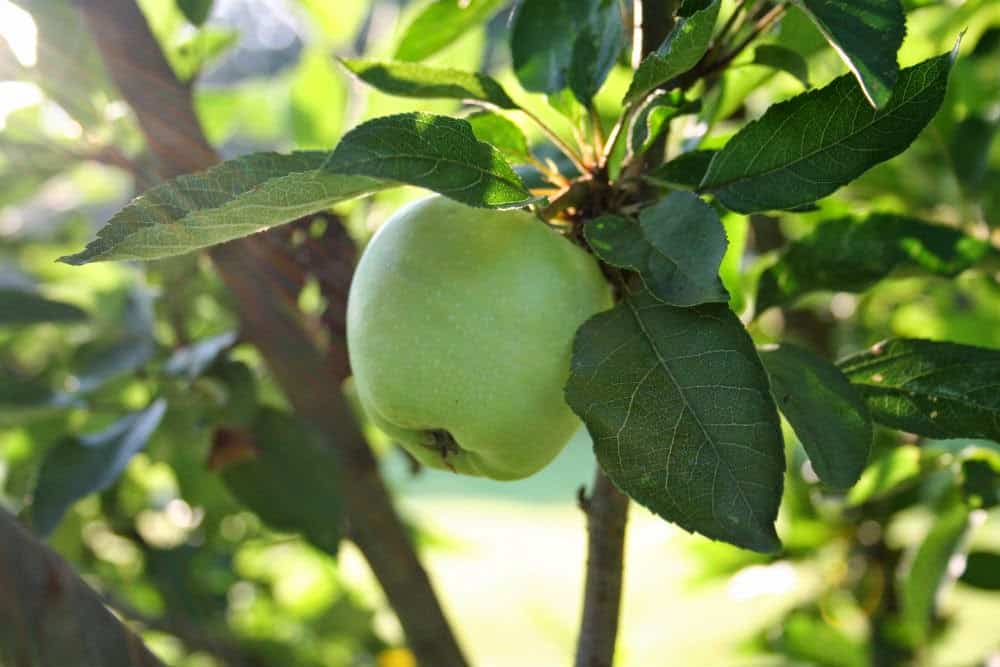
Temperatures to Grow Fruit: What You Can Grow
One you know your hardiness zone, you can narrow down your fruit tree selection to trees that will grow in your climate. Cooler gardening zones (lower numbers) or the more northern portions of the United States are better suited for growing apples and hybrid plums. Some cherries and pear trees will also grow well in cold garden climates. As you move further south towards the middle of the country and into the southern states like my state, Virginia, add peaches to the list, since they need milder winters. Nectarines, too, can be grown in the south. Figs can be grown in colder zones with winter protection.
This doesn’t cover every type of tree fruit, but it covers the major kinds. The list below can help keep it simple for you as you think about what you want to grow.
If your gardening zone is COOL or COLD…Zone 3 to 5 (northern United States), you can grow:
- Apples
- Hybrid plums
- Some pears
- Cherries
If your gardening zone is TEMPERATURE or WARM…Zone 6 and higher (mid and southern United States) you can grow:
- Apples
- Hybrid plums
- Some pears
- Cherries
- Pears
- Peaches
- Nectarines
- Figs
- Apricots
- Others
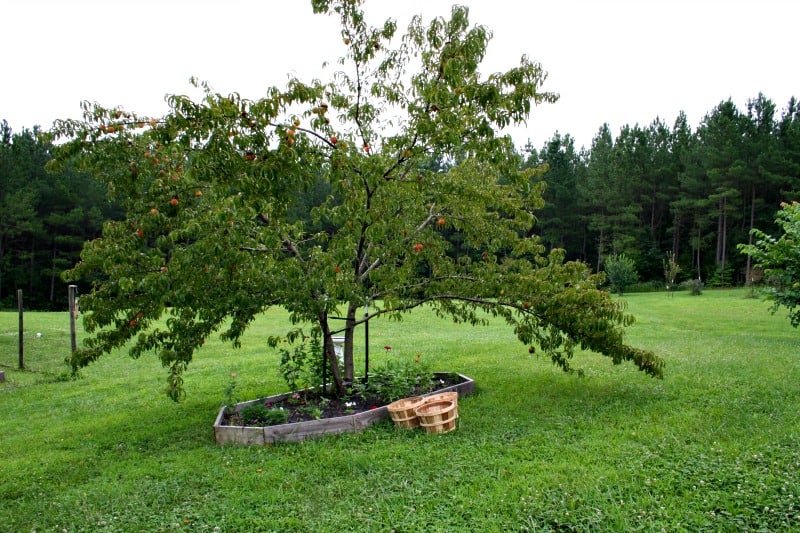
Tree Fruits: Varieties
You know when you go to the grocery store and they advertise Macintosh, Delicious, and Gala apples? These are variety names. There are hundreds of apple varieties, but you’re probably familiar with just three to 10 of the potentially hundreds of apple varieties available.
Pears are similar. I know at our grocery stores here in Virginia, I have a choice of Barlett, Bosc and Anjou pears. There are many, many other varieties to choose from.
And peaches! Peaches aren’t created equal. That bin of peaches or plums at the store is probably a commercial variety that ships easily. The kind you can grow in your backyard may have subtle flavor difference, color differences and more that makes the experience of growing peaches unique.
The varieties that are suited to your climate will be listed at your local Cooperative Extension office.
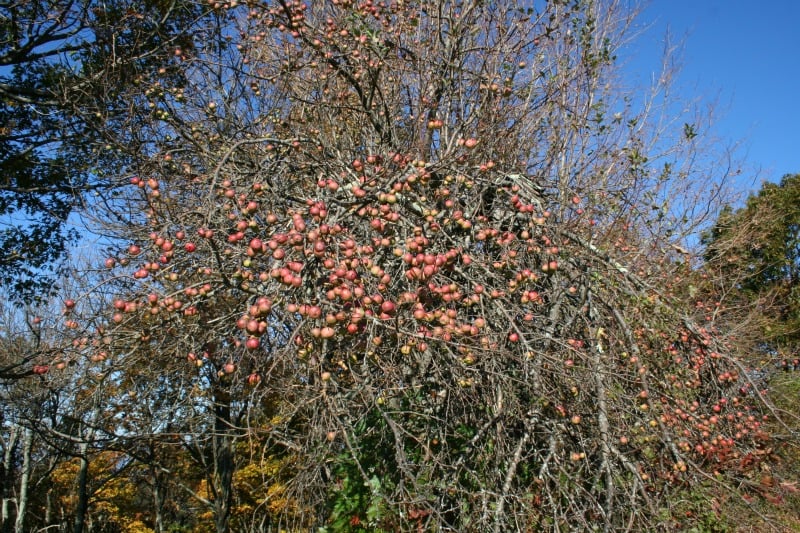
Can I Plant One or Do I Need Two Fruit Trees?
As you look down the list of fruit tree varieties for your gardening zone, you may see a note that the tree is “self pollinating” or needs another variety in order to pollinate. What does this mean?
Because of their genetic makeup, some fruit trees need a separate variety of tree in order to set fruit. Apples are a good example. They cannot self-pollinate, but need another tree, close by, but not necessarily the same variety, in order to make fruit. Bees must move the pollen from one tree to another.
The flowers on both fruit trees must be open at the same time. That’s why when you buy apple trees, you need to find a list of apple trees compatible with yours for pollination. If there is no apple tree blooming near your blooming apple tree, your tree won’t bear fruit.
Other trees are self-pollinating. The pollen from one flower on the tree can be carried to another flower on the same tree, and it will set fruit. Peaches, nectarines and sour cherries are usually self pollinating.
So to answer your question, “Can I plant just one fruit tree or do I need two?” the answer depends on:
- The type of fruit tree you are growing;
- How close the nearest compatible fruit tree is to yours.
If you want to grow apples or pears, for instance, you will need at least two. They should both bloom at the same time so that the bees can carry pollen from one to another. They will need to be planted within 50 feet of each other, too, for best results.
If you’re new to growing fruit trees, start with a self-pollinating type. Peach trees, if you can grow them in your garden zones, may be the easiest.

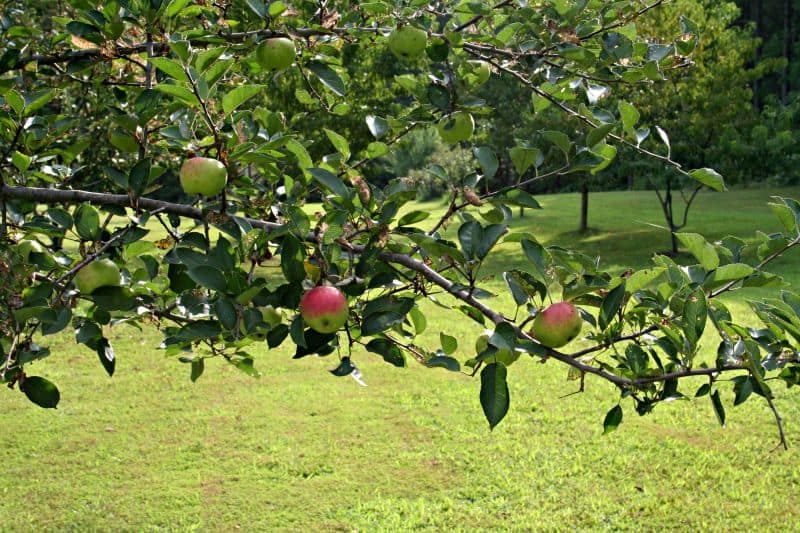
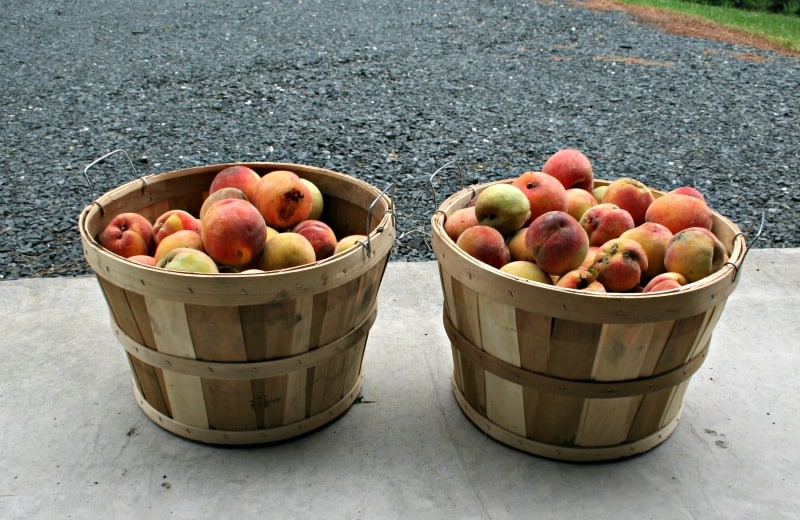




Wow, lot of great information here. I haven’t thought of these points but I learnt something new today about fruit trees.
Oh my goodness I just love your peach tree-so beautiful! Thanks so much for co-hosting #HomeMattersParty I look forward to reading your posts each week!
Very helpful post! Thanks for sharing! I’ve enjoyed co-hositng with you at the #HomeMattersParty ! Best of luck to you!
I’m in Texas, wouldn’t a cherry tree be something 🙂 I love reading your gardening posts Jeanne! #HomeMattersParty
What great tips!! Living in the mountains where we do, we don’t have many options. Love these ideas, though! 🙂 #HomeMattersParty
Where did you find the abandoned tree on Virginia’s Appalachian Trail? I hope it wasn’t where the fire is!
No, fortunately! It is here, where you park for the Cold Mountain Hike…you just hike the opposite way on the AT. The old trees are about 1 mile uphill the whole way 😉 Thanks for stopping by!
So I had a crabapple tree in my yard growing up and it always grew tons of crabapples. How did it bear fruit if there were no other fruit trees around?
Hi Lexi, a great question. Unlike apple trees, crabapples are self-pollinating, meaning that the pollen from one flower on your crabapple can pollinate another flower on the exact same tree. You can have just one crabapple tree and still get crabapples! Enjoy (and did you know you can make jelly from crabapples?)
After 10 years of trying, between the curculios and squirrels I’m thinking of giving up on my 2 apple trees. Sad in New Jersey.
Squirrels are tough! We had one eating peaches but the dog scared it away. Thanks for leaving a comment John.